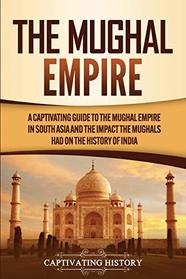If there was anything about the Mughal Empire in my world history class, I napped while it was discussed. Really, I mostly remember Roman, European, and Chinese history in those days, not Indian history. In the realm of human history, the Mughals were only a dynasty for about 300 years. During that short blip in human history, something magical emerged -- the Taj Mahal.
I thought the book explained much about the Mughal leadership when, on page 60, it said, "Since the inheritance of the Mughal Empire was not regulated by the law of primogeniture, the princes had to earn the inheritance of the throne through their military successes and through the power and influence they had in the court." Because of the strife between potential leaders, civil wars and rebellions were common. As with many other empires, fratricide and incarceration of family members was the common way to rise to the top.
I was surprised to see that Sharia law was instituted in India by Aurangzeb (one of Shah Jahan's sons, and the last significant Mughal leader).
My favorite part of this book was the ending pages that talked about the common people and their ways of life. Because of the heat, Indians only wore enough to cover their 'private parts.' Where the weather was colder, of course, the people wore more clothes. There was a very interesting discussion of the differences between Muslims and Hindi in the country. The explanation of life in the 'Harems' was the best I've read so far. Also in the closing pages was a fascinating explanation that Muslims and Hindi did not affect each other, even though they occupied the same territory. This book is well worth the reader's time.
I thought the book explained much about the Mughal leadership when, on page 60, it said, "Since the inheritance of the Mughal Empire was not regulated by the law of primogeniture, the princes had to earn the inheritance of the throne through their military successes and through the power and influence they had in the court." Because of the strife between potential leaders, civil wars and rebellions were common. As with many other empires, fratricide and incarceration of family members was the common way to rise to the top.
I was surprised to see that Sharia law was instituted in India by Aurangzeb (one of Shah Jahan's sons, and the last significant Mughal leader).
My favorite part of this book was the ending pages that talked about the common people and their ways of life. Because of the heat, Indians only wore enough to cover their 'private parts.' Where the weather was colder, of course, the people wore more clothes. There was a very interesting discussion of the differences between Muslims and Hindi in the country. The explanation of life in the 'Harems' was the best I've read so far. Also in the closing pages was a fascinating explanation that Muslims and Hindi did not affect each other, even though they occupied the same territory. This book is well worth the reader's time.




